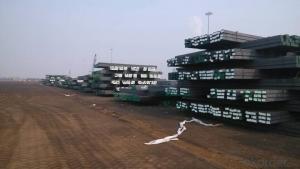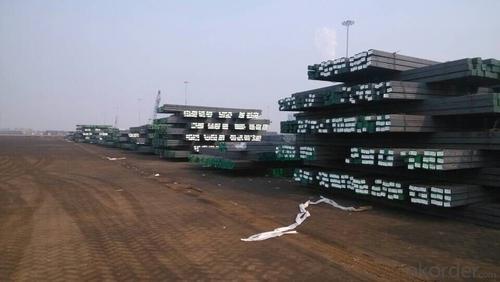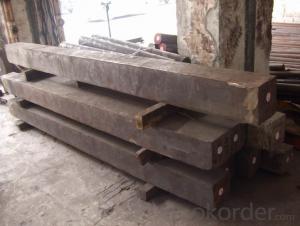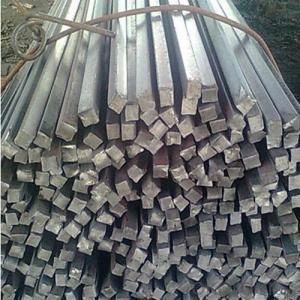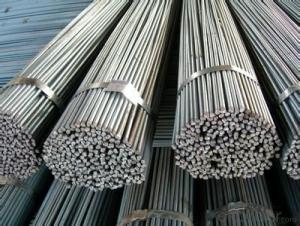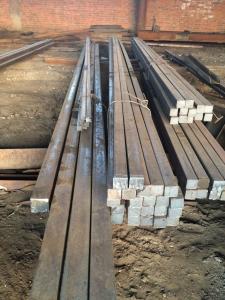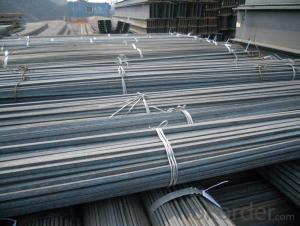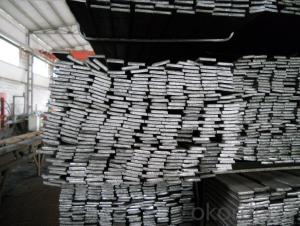Prime Hot Rolled Steel Square Bar Q235/Q275
- Loading Port:
- Tianjin
- Payment Terms:
- TT or LC
- Min Order Qty:
- 100 m.t.
- Supply Capability:
- 5000 m.t./month
OKorder Service Pledge
OKorder Financial Service
You Might Also Like
Product Description:
OKorder is offering Prime Hot Rolled Steel Square Bar Q235/Q275 at great prices with worldwide shipping. Our supplier is a world-class manufacturer of steel, with our products utilized the world over. OKorder annually supplies products to African, South American and Asian markets. We provide quotations within 24 hours of receiving an inquiry and guarantee competitive prices.
Product Applications:
Prime Hot Rolled Steel Square Bar Q235/Q275 are ideal for structural applications and are used in rolling different shape of the section steel for constrution.
Product Advantages:
OKorder's Prime Hot Rolled Steel Square Bar Q235/Q275 are durable, strong, and wide variety of sizes.
Main Product Features:
· Premium quality
· Prompt delivery & seaworthy packing (30 days after receiving deposit)
· Can be recycled and reused
· Mill test certification
· Professional Service
· Competitive pricing
Product Specifications:
Manufacture: Hot rolled
Grade: Q195 – 235
Certificates: ISO, SGS, BV, CIQ
Length: 6m,12m, as per customer request
Packaging: Export packing, nude packing, bundled
Product Name | Steel Square Bar |
Size | 60×60mm, 100×100mm, 120×120mm, 130×130mm, 150×150mm |
Length | 6M, 9M, 12M |
Grade | Q195, Q235, Q275, 3SP, 5SP, 20MnSi, Etc |
Standard | ASTM, GB, JIS |
Chemical Composition | Q235: C: 0.14-0.22% MN:0.3-0.7% SI: 0.3% max P:0.045%max S:0.045%max |
Q275 C: 0.27-0.38% MN:0.5-0.8% SI: 0.3% max P:0.045%max S:0.045%max | |
According to Customers Needs |
FAQ:
Q1: Why buy Materials & Equipment from OKorder.com?
A1: All products offered byOKorder.com are carefully selected from China's most reliable manufacturing enterprises. Through its ISO certifications, OKorder.com adheres to the highest standards and a commitment to supply chain safety and customer satisfaction.
Q2: How do we guarantee the quality of our products?
A2: We have established an advanced quality management system which conducts strict quality tests at every step, from raw materials to the final product. At the same time, we provide extensive follow-up service assurances as required.
Q3: How soon can we receive the product after purchase?
A3: Within three days of placing an order, we will arrange production. The normal sizes with the normal grade can be produced within one month. The specific shipping date is dependent upon international and government factors, the delivery to international main port about 45-60days.
Images:
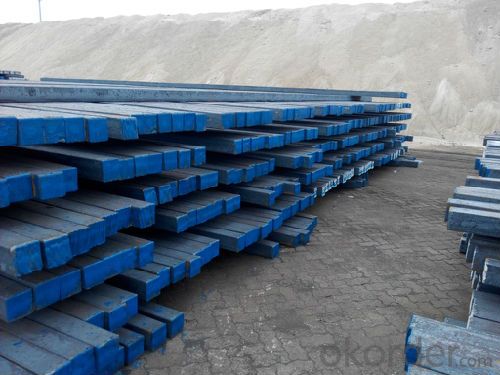
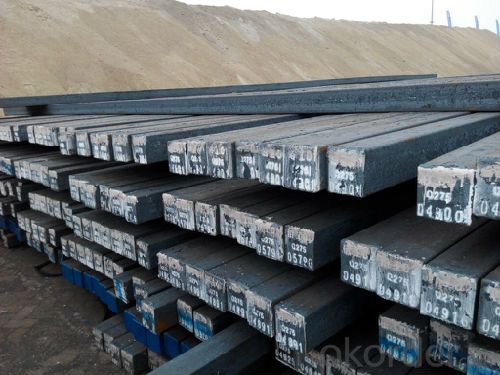
- Q: Can a steel square be used for checking the squareness of a miter saw blade?
- Using a steel square is not suitable for verifying the squareness of a miter saw blade. Although a steel square is effective for measuring and assessing right angles, it lacks the specific design to accurately determine the squareness of a miter saw blade. Miter saws possess their own mechanisms and adjustments to guarantee the blade's perfect perpendicularity to the table. To verify the squareness of a miter saw blade, it is advisable to utilize a specialized tool known as a squareness gauge or a designated square explicitly created for miter saws. These tools are intended to deliver precise measurements and angle checks, guaranteeing precise and square cuts.
- Q: Can a steel square be used for raised bed layout and construction?
- The utilization of a steel square for raised bed layout and construction is indeed possible. A steel square, which is also referred to as a framing square or carpenter's square, is an adaptable instrument commonly employed in woodworking and construction endeavors. Its L-shaped configuration, consisting of a long blade and shorter tongue, facilitates precise measurements, right angles, and diverse layout assignments. Concerning raised bed layout and construction, a steel square can prove particularly advantageous in guaranteeing straight lines, square corners, and consistent measurements. It can aid in delineating the boundaries of the raised bed, ascertaining the angles for corner joints, and assessing levelness. Furthermore, a steel square can assist in cutting and shaping the lumber or other materials utilized in the raised bed's construction. By aligning its straight edge with the desired cutting line, it provides a guide for accurate and straight cuts. This contributes to the attainment of a professional and immaculate finish for the raised bed. All in all, a steel square is an invaluable tool for raised bed layout and construction due to its precision, versatility, and ability to assist in various tasks integral to the creation of a raised bed.
- Q: Can a steel square be used for stair stringer layout and construction?
- Stair stringer layout and construction can indeed utilize a steel square. This multifunctional tool, alternatively referred to as a framing square or carpenter's square, is adaptable for various construction undertakings, including the arrangement and cutting of stair stringers. Comprising of two arms, one long and one shorter, conjoined at a 90-degree angle, this square permits precise measurements and angle layout, rendering it suitable for determining the rise and run of each stair step in a stringer. The long arm can be employed to indicate the rise, while the shorter arm can be employed to indicate the run. By aligning the square with the stringer board and marking the pertinent measurements, one can effortlessly carry out stair stringer layout and construction using a steel square. It is, however, imperative to ensure that the square is accurately calibrated and that the measurements are precisely transferred to avert any discrepancies during the construction process.
- Q: Can a steel square be used for pergola layout and construction?
- Yes, a steel square can be used for pergola layout and construction. A steel square is a versatile and durable tool that can help ensure accurate measurements and angles during the construction process. It can be used to layout and mark the positions of posts, beams, and rafters, as well as to check for squareness and levelness. Additionally, a steel square can aid in creating precise cuts and joints, leading to a well-built and structurally sound pergola.
- Q: Can a steel square be used for masonry work?
- No, a steel square is not typically used for masonry work. Masonry work requires specialized tools such as trowels, levels, and masonry hammers, which are better suited for the specific tasks involved in working with bricks, stones, or concrete blocks.
- Q: Can a steel square be used for checking the alignment of a lathe tool rest?
- Yes, a steel square can be used for checking the alignment of a lathe tool rest. A steel square is a versatile tool that is commonly used in woodworking and metalworking to ensure accurate right angles and alignments. When checking the alignment of a lathe tool rest, a steel square can be placed against the tool rest and the workpiece to ensure that they are perpendicular to each other. This helps in achieving precise and accurate turning operations on the lathe. It is important to note that while a steel square can be a useful tool for checking alignment, it is always recommended to follow the manufacturer's instructions and guidelines for proper tool rest alignment on the lathe.
- Q: Can a steel square be used for cutting angles in woodworking?
- Typically, a steel square is not utilized for cutting angles in woodworking. It is primarily employed for verifying and marking right angles in woodworking projects, also known as a try square or carpenter's square. This tool comprises a handle and a metal blade, specifically designed to ensure precision in joint and corner squareness. In woodworking, specialized tools like miter saws, circular saws, or table saws are commonly utilized for cutting angles. These tools possess adjustable angles and bevels that enable accurate and controlled angle cutting. They offer increased versatility and precision in cutting various angles necessary for woodworking projects. Additionally, specialized jigs and guides can be utilized in conjunction with these tools to further enhance angle cut accuracy and repeatability. Although a steel square can serve as a reference for marking angles, it is not intended to function as a cutting tool itself. Hence, it is advisable to use suitable tools and equipment specifically designed for cutting angles in woodworking projects to achieve optimal outcomes.
- Q: Can a steel square be used for measuring the pitch of a roof?
- Yes, a steel square can be used for measuring the pitch of a roof. A steel square, also known as a framing square or carpenter's square, is a versatile tool used by carpenters and roofers for various measurements and calculations. To measure the pitch of a roof, you can use the square's graduated scales and angles to determine the angle and slope of the roof. By placing the square on the roof's surface and aligning it with the rafters or trusses, you can easily determine the pitch by reading the scale or using the square's built-in formulas. However, it is important to note that using a steel square may not provide the most accurate measurements for complex or irregular roof shapes, and specialized roofing tools or instruments may be more suitable in those cases.
- Q: How do you use a steel square to determine the angle of a dado cut?
- To use a steel square to determine the angle of a dado cut, you will need to follow a few simple steps. First, ensure that your steel square is clean and in good condition. It should have clear markings and a straight edge. Next, place the square against the edge of the material where you plan to make the dado cut. Make sure that the square is aligned properly and flush against the material. Then, adjust the square until the blade of the square is parallel to the surface of the material. This means that the blade should be perfectly horizontal or vertical, depending on the angle you want to measure. Once the square is aligned, look for the angle markings on the square. These markings are usually located on the blade or the body of the square. Read the angle measurement that corresponds to the alignment of the square. Finally, take note of the angle measurement you obtained from the steel square. This measurement will help you set up the appropriate angle on your saw or cutting tool to make the dado cut accurately. Remember to double-check your measurements and ensure that the square is properly aligned to get the most accurate angle measurement for your dado cut.
- Q: Can a steel square be used for making 90-degree corners?
- Yes, a steel square can be used for making 90-degree corners.
Send your message to us
Prime Hot Rolled Steel Square Bar Q235/Q275
- Loading Port:
- Tianjin
- Payment Terms:
- TT or LC
- Min Order Qty:
- 100 m.t.
- Supply Capability:
- 5000 m.t./month
OKorder Service Pledge
OKorder Financial Service
Similar products
Hot products
Hot Searches
Related keywords
